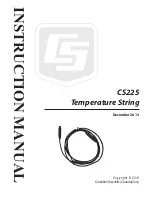
m908 User Manual, Rev. G
the sound from one transducer and the mixing of signals between the ears does not exist. In this
situation the brain is left without many of the psycho acoustic clues required to generate a
properly distributed image and an accurate sound stage. The result is that sounds seem to cluster
in the far left, far right or center of your head. Since the vital clues are absent, the brain has a
difficult time deciding how to process the sounds coming from the headphone, which can result
in listening fatigue when listening for extended periods of time. The m908 contains circuitry
which electronically simulates the signal cross-feed that occurs in a real acoustic space and helps
the brain establish instrument locations across the entire sound stage. While it is difficult to
perfectly model the very complex level, delay and frequency response characteristics of the head,
the cross-feed circuitry in the m908 gives the brain some of the basic clues it needs and the result
is a very pleasing simulation of an acoustic space. We chose the parameters of the cross-feed
circuit to find a good compromise between accurate imaging and tonal neutrality. For recreational
listening there could be more aggressive modeling of the head related transfer function (HRTF)
but this is usually at the expense of adding tone color. For critical monitoring during the
recording/editing/mixing process the user will find that the m908 cross-feed circuit provides a
sonically neutral character.
Below is a flow diagram and frequency response plot showing the response of the m908
crossfeed circuit. In this graph one channel of the headphone amplifier is driven. The two traces
show the direct channel and the opposite (cross-feed) channel.
Page 29 of 135
Illustration 20: Headphone Crossfeed Flow Diagram
















































